Transform Your Home into a Cozy Winter Retreat While Reducing Heating Expenses
As the chilly winds of winter approach, enveloping our surroundings with frost, it becomes essential to seek comfort in the warmth of our homes. However, the rising costs of heating during these months can be overwhelming, especially for those on a budget. Thankfully, a range of energy-efficient methods exists to help you turn your living space into a snug sanctuary without straining your finances. In this comprehensive guide, you’ll uncover a wealth of practical, actionable tips and proven techniques aimed at keeping your home warm and inviting while effectively managing energy costs throughout the winter season.

Enhance Your Home’s Warmth by Detecting and Sealing Air Leaks
A significant portion of heat loss in homes can be attributed to unnoticed air leaks. By proficiently identifying and sealing these leaks, you can substantially boost your home’s energy efficiency and significantly cut down on heating expenses. This detailed guide provides effective strategies to help you find and resolve air leaks throughout your home, with a particular focus on critical areas like vents, windows, and doors:
- Windows:
- Inspect for Drafts: Reserve time on windy days to thoroughly check your windows for potential drafts. Utilizing a candle or incense stick can assist in detecting even the faintest air movements that signal leaks, enabling you to pinpoint areas that need attention.
- Apply Weatherstripping: Install weatherstripping materials—such as adhesive-backed foam or V-strip—around window frames to ensure a tight seal. Selecting the right type based on your specific window design is crucial for effective insulation and maximizing energy savings.
- Doors:
- Check for Gaps: Carefully assess the edges of your doors for any visible gaps that may allow cold air to enter your home. Observing these areas in a well-lit room at night can help highlight any leaks, making them easier to address.
- Install Door Sweeps and Weatherstripping: Utilize door sweeps at the bottom of your doors to block drafts, and apply self-adhesive weatherstrips along the sides to effectively seal any gaps that may compromise your home’s energy efficiency.
- Vents and Ducts:
- Seal Ductwork: Ensure that your ductwork is properly sealed to prevent warm air from escaping into unconditioned spaces. Using a mastic sealer or foil tape can secure any loose connections, enhancing the overall performance of your heating system.
- Install Vent Covers: Consider utilizing magnetic or adhesive vent covers to effectively control airflow, minimizing drafts in less frequently used rooms while maintaining comfort in the rest of your home.
- Caulking and Sealant:
- Inspect Exterior Walls: Examine your home’s exterior walls for any cracks or holes. Applying caulk or sealant to fill these gaps can prevent air and moisture from entering, contributing to improved energy efficiency.
- Select the Right Sealant: Choosing the appropriate sealant based on location and material is vital. Silicone is ideal for flexible joints, while acrylic caulk is better suited for indoor applications.
- Utilize Draft Stoppers:
- Place Along Door Bottoms: Use draft stoppers, commonly known as door snakes, to block cold air from seeping in through the bottom of doors. These fabric tubes are easily positioned or removed as needed, providing a quick and effective solution to unwanted drafts.
- Seek Professional Assistance:
- Consider Energy Audits: Hiring a professional to conduct an energy audit can be incredibly beneficial. Experts use advanced tools, such as thermal imaging cameras, to uncover hidden leaks and provide personalized solutions tailored to your home.
Regular inspections and prompt repairs of identified air leaks not only enhance your home’s overall comfort but also significantly boost energy efficiency. By proactively sealing these gaps, you can reduce your energy bills while fostering a more inviting living environment throughout the winter months.
Harness Natural Sunlight to Enhance Warmth and Atmosphere in Your Home
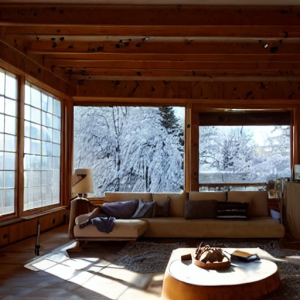 Exploiting the power of natural sunlight during the winter months can significantly improve both the warmth and ambiance of your living space. Here’s an in-depth exploration of effective strategies to harness daylight for your benefit:
Exploiting the power of natural sunlight during the winter months can significantly improve both the warmth and ambiance of your living space. Here’s an in-depth exploration of effective strategies to harness daylight for your benefit:
- Daylight Utilization Strategies:
- Strategic Curtain Management: During daylight hours, ensure that curtains and blinds are fully open to allow natural sunlight to flood your living areas. Position them to maximize window exposure, enabling sunlight to penetrate deeper into your rooms for enhanced warmth and brightness.
- Choose Sheer Fabrics: If privacy is a concern, consider opting for sheer curtains that filter sunlight while still providing a level of seclusion. The diffusion of light through sheer materials creates a warm, inviting atmosphere that brightens your home without sacrificing privacy.
- Solar Heat Gain:
- Understanding Solar Heat: Sunlight entering your home contributes to solar heat gain, especially through south-facing windows that receive the most sunlight in winter. This natural warmth can help decrease your reliance on additional heating sources, leading to significant savings on energy bills.
- Utilize South-Facing Windows: Make it a priority to open curtains and blinds on south-facing windows to maximize sunlight exposure, which is particularly beneficial in colder climates where every ray counts toward maintaining warmth.
- Nighttime Heat Retention:
- Close Curtains at Night: As evening temperatures drop, closing your curtains and blinds can help insulate your home, preserving the warmth accumulated during the day. Opt for heavier drapes or those with thermal lining for optimal insulation.
- Invest in Insulated Window Treatments: Consider incorporating insulated drapes or shades to further minimize heat loss, creating an additional barrier against the cold air infiltrating your living space.
- Ambiance and Well-Being:
- Enhance Indoor Lighting: Natural sunlight not only warms your home but also improves the quality of indoor lighting. This reduces your reliance on artificial lighting during the day, ultimately lowering energy consumption and positively impacting your electricity bills.
- Incorporate Biophilic Design: Exposure to natural light is linked to enhanced well-being. Allowing sunlight into your living areas can positively influence your mood and productivity levels, contributing to a more enjoyable home environment.
- Window Maintenance:
- Clean Windows Regularly: Ensure that your windows are cleaned frequently to maximize sunlight entry. Regularly removing dust and debris from both the interior and exterior surfaces prevents obstructions that may limit natural light and warmth.
- Smart Home Technology:
- Consider Automated Window Treatments: Think about installing smart window treatments that can automatically open and close based on pre-set schedules, optimizing sunlight exposure and heat retention without requiring manual adjustments.
By incorporating these tactics into your winter routine, you enable yourself to fully leverage the benefits of natural sunlight, crafting a warm and inviting atmosphere in your home while enhancing energy efficiency. By optimizing window treatments and understanding solar heat gain, you can significantly improve comfort and ambiance during the colder months.
Enhance Your Home’s Energy Efficiency with Superior Insulation Techniques
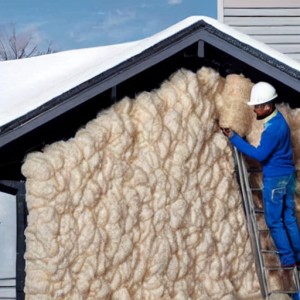 Effective insulation is essential for minimizing heat loss and improving the overall energy efficiency of your home. Developing a comprehensive insulation strategy that targets key areas like the attic, walls, and basement will foster a warmer, more cost-effective living environment throughout the chilly winter months.
Effective insulation is essential for minimizing heat loss and improving the overall energy efficiency of your home. Developing a comprehensive insulation strategy that targets key areas like the attic, walls, and basement will foster a warmer, more cost-effective living environment throughout the chilly winter months.
Start your energy efficiency journey by assessing the insulation levels in your attic. Adequate insulation in this area prevents heat from escaping through the roof, acting as a crucial barrier. Various insulation materials, such as fiberglass, cellulose, and foam board, offer differing levels of effectiveness. Consulting with a professional can help you determine the most suitable insulation type and thickness for your attic, ensuring optimal performance and comfort.
Next, ensure that your walls are adequately insulated to create a continuous thermal envelope around your home. Proper wall insulation plays a vital role in regulating indoor temperatures by preventing heat from escaping through exterior surfaces. Insulation in exterior walls serves as a buffer against outdoor temperature fluctuations, making it a top priority for enhancing both energy efficiency and comfort.
While insulating your basement, pay close attention to both the walls and ceiling if applicable. Uninsulated basements, often in contact with the cold ground, can be a significant source of heat loss. Utilize materials like rigid foam boards or spray foam insulation to effectively insulate basement walls. If the ceiling of the basement remains unfinished, insulating it creates a thermal barrier between the basement and the living areas above, further boosting energy efficiency.
When choosing insulation materials, consider the R-value, which measures a material’s heat resistance. Higher R-values indicate better insulation performance. However, the ideal R-value may vary based on factors such as climate, local building codes, and specific application areas, so thorough research is essential to make informed decisions.
In addition to adequate insulation, ensure that your home is properly sealed to prevent air leaks that can undermine insulation effectiveness. Avoid allowing conditioned air to escape through gaps around windows, doors, and other potential openings to maintain a comfortable indoor environment.
Investing in quality insulation not only aids in retaining warmth but also leads to substantial savings on heating bills over time. The initial investment in insulation pays dividends by reducing the need for constant heating and enhancing energy efficiency throughout your home.
For a thorough evaluation, consider consulting insulation professionals or energy auditors. These experts can provide tailored recommendations based on your home’s unique characteristics, ensuring your insulation strategy aligns with your energy-efficiency goals and the specific requirements of your living space.
Transform Your Comfort Levels with a Smart Programmable Thermostat
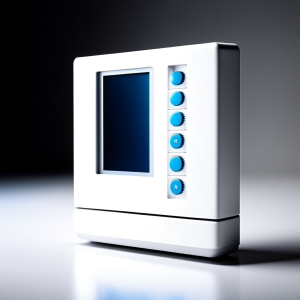 Investing in a programmable thermostat represents a proactive step towards optimizing your home’s energy consumption while simultaneously enhancing your comfort levels. This innovative device allows for flexible and automated temperature control, significantly improving your comfort and aiding in energy savings.
Investing in a programmable thermostat represents a proactive step towards optimizing your home’s energy consumption while simultaneously enhancing your comfort levels. This innovative device allows for flexible and automated temperature control, significantly improving your comfort and aiding in energy savings.
Automated Temperature Adjustments: One primary advantage of a programmable thermostat is its capability to adapt seamlessly to your daily schedule. By pre-setting temperature adjustments based on your routine, you can ensure that your home is efficiently heated when required, thereby avoiding unnecessary energy waste during times when you are away or asleep.
Energy Savings through Setback Settings: Programmable thermostats provide the option to implement setback settings during periods when you are away or sleeping. Lowering the temperature during these times prevents your heating system from overworking. According to the U.S. Department of Energy, reducing the temperature by just one degree can yield savings of up to three percent on home heating costs, which can accumulate significantly over time.
Tailored Comfort Levels: These devices empower you to customize temperature settings to align with your personal preferences. You can program the thermostat to warm your home just before your return, ensuring a comfortable environment upon your arrival. This personalized approach enhances both energy efficiency and your satisfaction with your home’s climate.
Optimizing Heating Cycles: A programmable thermostat allows for more efficient heating cycles. The system operates with greater precision, minimizing energy waste while maintaining consistent temperatures during times when your home is occupied, and adjusting appropriately when it is unoccupied.
Smart Thermostats and Connectivity: The evolution of technology has introduced smart thermostats, which offer advanced features such as remote management via smartphone apps and integration with home automation systems. These capabilities provide unprecedented control and energy management options, allowing you to monitor and adjust your home’s temperature even when you’re away.
Installation and Compatibility: Installing a programmable thermostat is typically straightforward, with many models being compatible with existing heating systems. However, selecting a thermostat that fits your HVAC system and meets your home’s specific needs is crucial to maximize effectiveness.
Considerations for Usage: While programmable thermostats are highly effective, careful programming is essential to maximizing their benefits. Understanding your daily schedule and adjusting the settings accordingly ensures that the thermostat operates harmoniously with your lifestyle, enhancing energy savings while maintaining comfort.
Achieve Ultimate Winter Comfort with Layering Techniques
 To boost your comfort during winter, consider the straightforward yet effective approach of personal layering before increasing the thermostat settings. This strategy not only aids in reducing energy costs but also cultivates a more pleasant indoor environment, giving you greater control over your comfort levels.
To boost your comfort during winter, consider the straightforward yet effective approach of personal layering before increasing the thermostat settings. This strategy not only aids in reducing energy costs but also cultivates a more pleasant indoor environment, giving you greater control over your comfort levels.
Clothing as Insulation: View your clothing as an additional layer of insulation for your body. By wearing cozy sweaters, thermal socks, and comfortable slippers, you create a barrier against the cold, allowing for warmth without solely depending on heating systems. Choose materials such as wool and fleece, which are renowned for their excellent insulating properties, to keep you warm and comfortable.
Footwear Matters: Cold feet can significantly detract from your comfort indoors. Investing in insulated slippers or warm socks is essential for keeping your feet cozy. This simple adjustment not only enhances warmth but also reduces the necessity to raise the thermostat temperature to compensate for chilly extremities, contributing to overall energy savings.
Layering for Bedtime Comfort: Extend the concept of layering to your bedding. Rather than immediately cranking up the thermostat at bedtime, utilize additional blankets to create layers on your bed. Combining lightweight and heavier blankets enables you to customize the layers according to your comfort needs, resulting in a warm cocoon for sleeping that helps retain body heat.
Understanding the Science of Layering: Layering is a time-tested technique that focuses on conserving and capturing body heat. Each layer traps warm air, thus enhancing overall insulation. By mimicking the natural way our bodies regulate temperature, you can maintain comfort with less reliance on artificial heating, fostering a more sustainable approach to winter warmth.
Benefits Beyond Energy Savings: Mastering the art of layering yields advantages beyond mere energy conservation. It promotes an eco-friendly lifestyle by minimizing the carbon footprint associated with higher heating demands. Moreover, layering cultivates a sense of coziness and control over your environment, allowing for personalized warmth that enhances your overall comfort.
Seasonal Wardrobe Transition: As winter approaches, consider incorporating additional insulating items into your wardrobe. Seek thicker fabrics, thermal undergarments, and accessories like scarves and gloves. By adapting your clothing to the changing seasons, you’ll be better equipped for a winter that is both comfortable and energy-efficient.
Mindful Thermostat Adjustments: By integrating layering into your routine, you can make thermostat adjustments more thoughtfully. Even minor changes, such as lowering the temperature by a few degrees, become attainable when paired with the added warmth offered by layered clothing and bedding, leading to greater energy savings.
Ensure Optimal Performance with Regular Maintenance of Your Heating System
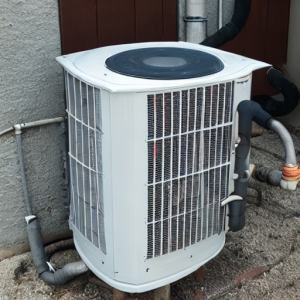 A well-maintained heating system is crucial for achieving a comfortable indoor temperature during winter while minimizing energy expenses. Prioritizing regular maintenance and professional servicing ensures that your heating system operates at peak efficiency, providing reliable warmth when you need it most.
A well-maintained heating system is crucial for achieving a comfortable indoor temperature during winter while minimizing energy expenses. Prioritizing regular maintenance and professional servicing ensures that your heating system operates at peak efficiency, providing reliable warmth when you need it most.
Furnace Filter Maintenance: Start by closely monitoring your furnace filters. These filters play a vital role in maintaining optimal airflow, which is crucial for efficiency. Clean or replace filters regularly to prevent dust and debris buildup. Clogged filters limit airflow, forcing the system to work harder and consume more energy, which can lead to increased heating costs.
The Role of Airflow in Efficiency: Understanding the relationship between airflow and heating efficiency is essential. Unrestricted airflow allows the system to distribute heat evenly throughout your home, reducing the workload on your furnace. This results in improved comfort and decreased energy usage, enhancing the overall efficiency of your heating system.
Professional Inspection and Servicing: Don’t underestimate the importance of professional assistance for your heating system. Schedule a comprehensive inspection and servicing before winter arrives. Certified technicians can identify and address potential issues that could compromise system efficiency, ensuring you stay warm and comfortable during the colder months.
Preventive Maintenance Benefits: Investing in preventive maintenance pays dividends in the long run. It aids in the early detection and resolution of issues, extending the lifespan of your heating system. Routine inspections ensure all components are functioning correctly, enhancing productivity and reducing the risk of unexpected breakdowns that could leave you in the cold.
Efficiency Upgrades: Consider upgrading your heating system for improved efficiency. Newer models often come equipped with advanced features designed to maximize energy efficiency. While the initial investment may seem significant, the long-term savings on energy bills, combined with potential rebates, make this a financially sound choice.
The Article Energy Hacks for a Budget-Friendly Cozy Winter Home Was Found On https://limitsofstrategy.com



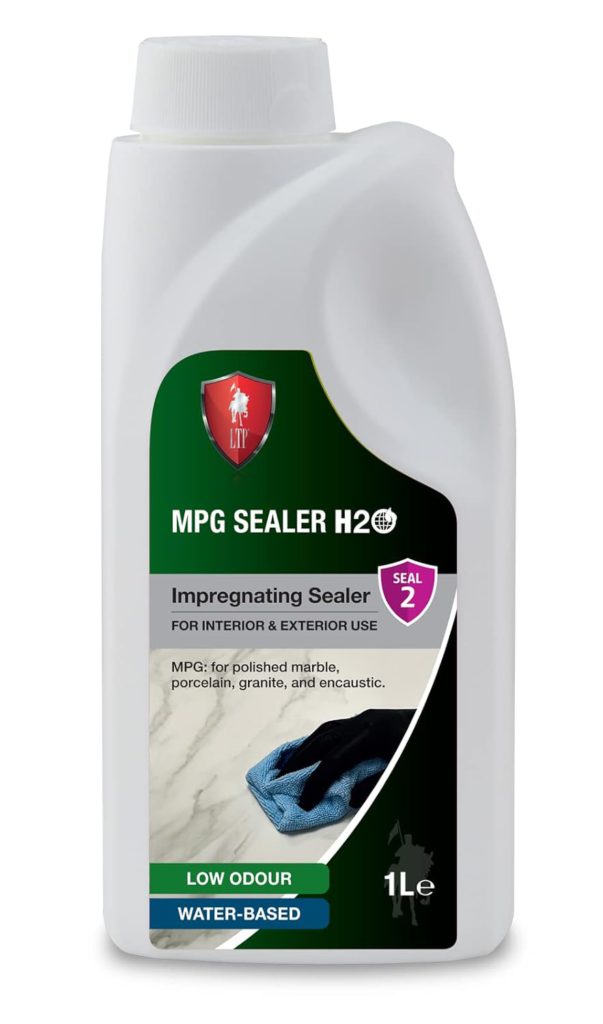

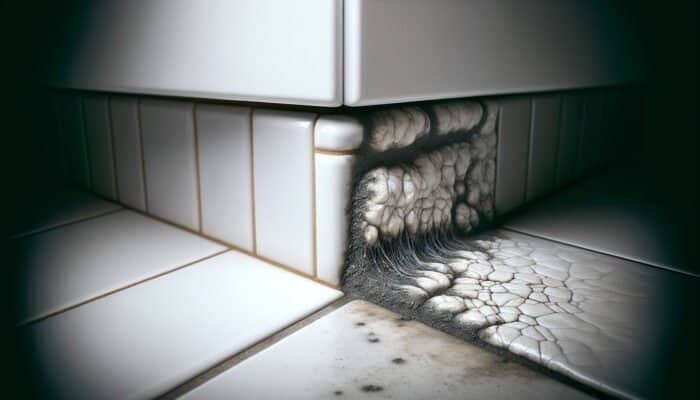
I really resonate with the idea of creating a cozy winter retreat at home while keeping those heating bills in check. Last winter, I focused on sealing up some drafts, especially around my windows and doors. It was surprising how much of a difference it made—not just in warmth, but also in comfort. I found some weatherstripping tape to be super effective, and it’s a pretty budget-friendly option too!
Creating a cozy winter retreat at home really can transform the whole season, can’t it? It’s great to hear that sealing up drafts made such a noticeable difference for you. I think we underestimate just how much those small gaps can affect our comfort levels—not to mention our energy bills. I did something similar last winter, and I was amazed at how much warmer my space felt.
Creating a cozy winter retreat at home really does sound lovely, especially when you can do it without breaking the bank. Sealing up drafts is such an underrated tip; it’s amazing how those small changes can lead to a more comfortable living space. I’ve also been focusing on that lately, and it’s made a noticeable difference in both warmth and my electric bill.
Creating that cozy winter retreat does have a certain charm, doesn’t it? It really makes the cold months feel a bit more welcoming, especially when you can transform your space without spending a fortune. Sealing up drafts is one of those small steps that can lead to noticeable changes. It’s impressive how much of a difference it can make in keeping your home warm and comfy.
Your focus on sealing air leaks really resonates with me! Last winter, I tackled this issue in my own home and was surprised at how many small drafts I found around windows and doors. After sealing them, I noticed a significant difference not just in warmth but also in how much longer I could go between heating cycles. It’s amazing how much energy we can save by just paying attention to these often-overlooked areas. I’d also love to hear if anyone’s experimented with using thermal curtains or even window film—those seem like effective tools for adding an extra layer of insulation. How do others feel about blending comfort with sustainability during the winter?
It’s interesting to hear about your experience tackling air leaks—it’s often those small drafts that sneak in and really disrupt our comfort and energy efficiency. Your observations about the impact of sealing leaks on heating cycles highlight something many people overlook; even minor adjustments can genuinely change how a home feels and operates.
I really appreciate how you’ve highlighted the importance of making our homes cozy while being mindful of heating expenses. I recently took on a DIY project to seal air leaks in my own home, and it was eye-opening how much warmth was escaping through drafty windows and doors. It not only made a noticeable difference in comfort but also helped lower my heating bill!
It’s great to hear about your DIY project! Sealing air leaks can be such a game changer for comfort and energy savings. I remember when I tackled my windows; I was surprised at how much of a difference a little weather stripping made. It’s interesting how those small gaps can have such a big impact. Have you tried adding heavy curtains or thermal drapes? They can also help trap heat during those colder months. Little adjustments like these not only keep the chill out but also create a cozier vibe overall. What other projects are you thinking about?
What a fantastic read! The contrast of frosty outdoor temp and cozy indoor vibes is one of winter’s most delightful quirks, isn’t it? Though I can’t say I’m a fan of watching my heating bill creep up like a sneaky cat trying to swipe my warm blanket, I do appreciate the thoughtful approaches you’ve laid out for keeping our homes snug without sending our wallets into hibernation.
I really appreciate the focus on practical strategies for making our homes cozier while being mindful of energy costs! This winter, I’ve been experimenting with adding thermal curtains to my living room. Not only do they help keep the warmth in, but they also add a nice layer of texture to the space. I’ve noticed less draft around the windows since I made this change.